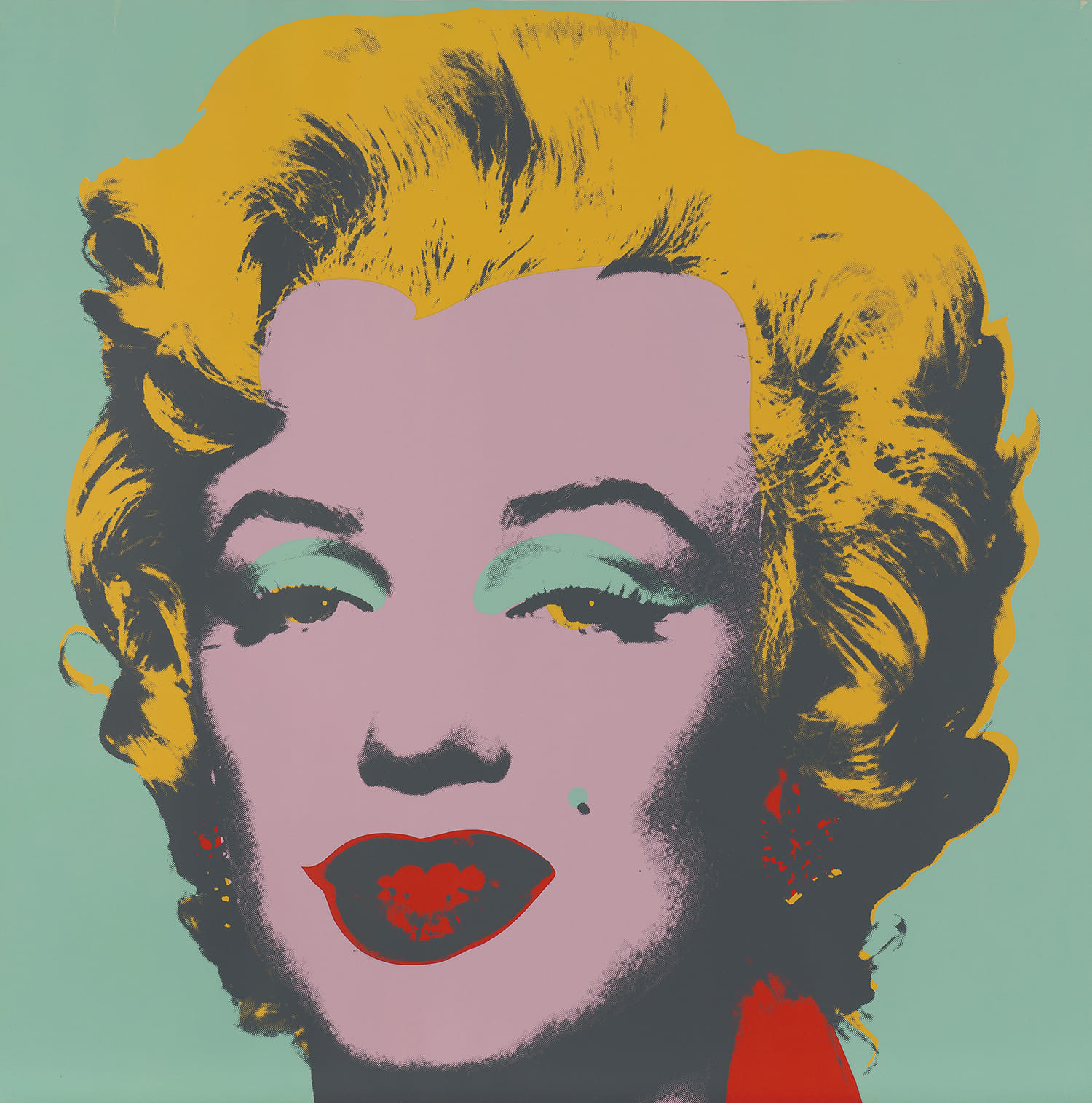

53
Andy Warhol
Marilyn Monroe
Full-Cataloguing
Warhol’s portraiture enshrined a glamorous, talented and showy ‘court;’ private commissions rolled in and became his big business. At first Warhol was chasing after the rich and famous but then the rich and famous chased him. Through his commissions Warhol attained a notoriety that harkened back to an age when artists were financed by wealthy patrons. Everybody who was anybody from the scene of Studio 54 or from Warhol’s cool and stylish Factory crew wanted a portrait.
Marilyn Monroe's image most fascinated Warhol. Creating several works from the same publicity photo of the actress, Warhol left for the world bold commemorations of her tragic end. The misalignment of contours, bleached out shadows, bright yellow hair and cherry red lips of lot 53, Marilyn Monroe, indicated Warhol’s signature palette. Marilyn looked familiar, yet by Andy’s hand she became different, at once removed from our world while still appearing tangled by the realities of it.
Throughout the 1970s and early 1980s Warhol’s portraits become simpler as he abandoned gestural elements. Lot 55, Mao, was an impish rendition of an iconic symbol now seen with blue lips. A child-like approach to coloring appeared again in his later 1985 portrait of Queen Margrethe II of Denmark, lot 62, from his Reigning Queens series. Lot 60, Georgia O’Keeffe, was among Warhol’s earliest uses of diamond dust in portraits. In this portrait Warhol refined the artist’s image; O'Keeffe appeared contemplative and serious, revealing of Warhol’s admiration for the renowned painter. In lot 54, Muhammad Ali, there was a similar richness of printing as well as a sense of depth created through the use of miss-registration and overprinting. While at first glance full insouciance, Warhol’s portraits upon closer viewing revealed something deeper about his sitters, all surface to be sure and yet full of prescient observations.
Andy Warhol
American | B. 1928 D. 1987Andy Warhol was the leading exponent of the Pop Art movement in the U.S. in the 1960s. Following an early career as a commercial illustrator, Warhol achieved fame with his revolutionary series of silkscreened prints and paintings of familiar objects, such as Campbell's soup tins, and celebrities, such as Marilyn Monroe. Obsessed with popular culture, celebrity and advertising, Warhol created his slick, seemingly mass-produced images of everyday subject matter from his famed Factory studio in New York City. His use of mechanical methods of reproduction, notably the commercial technique of silk screening, wholly revolutionized art-making.
Working as an artist, but also director and producer, Warhol produced a number of avant-garde films in addition to managing the experimental rock band The Velvet Underground and founding Interview magazine. A central figure in the New York art scene until his untimely death in 1987, Warhol was notably also a mentor to such artists as Keith Haring and Jean-Michel Basquiat.